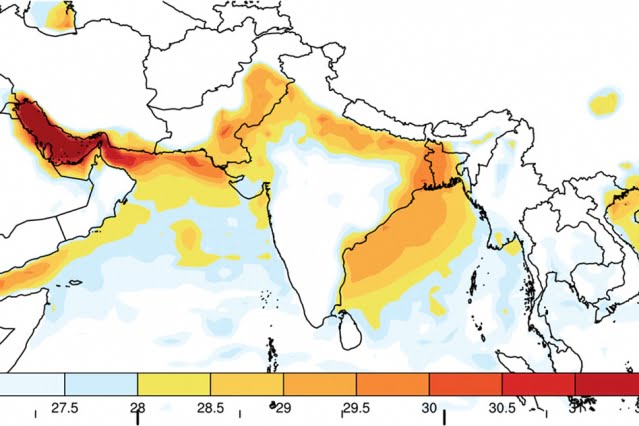Today’s map comes from scientists at MIT, who found that significant portions of Southeast Asia, including India, Pakistan and Bangladesh could be uninhabitable in 73 years. Using climate modeling scenarios, the team of researchers let by Elfatih Eltahir found that some densely populated regions could regularly exceed what is known as a “wet bulb” threshold — this is a measure of heat and humidity, and above 35 degrees (or about 95 Fahrenheit), humans cannot survive for more than a few hours.
The new analysis is based on recent research showing that hot weather’s most deadly effects for humans comes from a combination of high temperature and high humidity, an index which is measured by a reading known as wet-bulb temperature. This reflects the ability of moisture to evaporate, which is the mechanism required for the human body to maintain its internal temperature through the evaporation of sweat. At a wet-bulb temperature of 35 degrees Celsius (95 degrees Fahrenheit), the human body cannot cool itself enough to survive more than a few hours.
A previous study of temperature and humidity records show that in today’s climate, wet-bulb temperatures have rarely exceeded about 31 C anywhere on Earth…In today’s climate, about 2 percent of the Indian population sometimes gets exposed to extremes of 32-degree wet-bulb temperatures. According to this study, by 2100 that will increase to about 70 percent of the population, and about 2 percent of the people will sometimes be exposed to the survivability limit of 35 degrees. And because the region is important agriculturally, it’s not just those directly affected by the heat who will suffer, Eltahir says: “With the disruption to the agricultural production, it doesn’t need to be the heat wave itself that kills people. Production will go down, so potentially everyone will suffer.”
This video does a good job of explaining these findings, and is yet another warning that human survival requires the world to meet its commitments under the Paris Accord.
